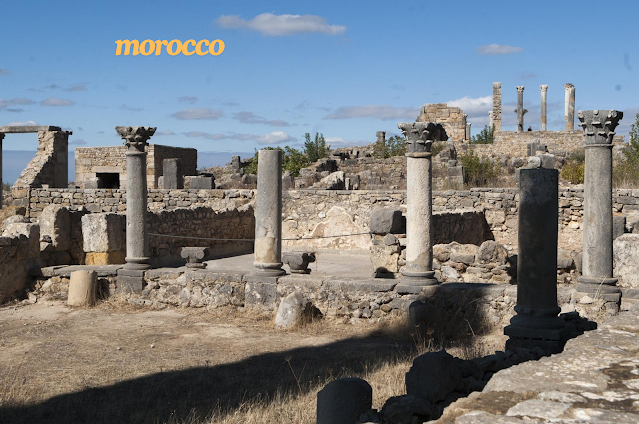The history of ancient Morocco from the emergence of Homo sapiens to the Islamic conquest
Morocco is an ancient land inhabited since the origins of our species The first signs of Homo sapiens come from the Jebel Irhoud site located in the heart of the Atlas and where fossil remains among the oldest ever discovered in the world have been found Those men and women hunted wild animals, made stone tools and lived in small groups linked to nature
Over the millennia the territory was crossed by different nomadic and sedentary peoples some of whom moved from the Sahara when the desert began to become arid Others arrived from the Mediterranean or sub-Saharan Africa and all left traces in the language, customs and beliefs The first agricultural communities developed in the fertile valleys near the ocean and in the mountains where water flowed all year round The villages grew cereals domesticated animals and venerated forces of nature linked to the sun rain and fertility
Over time the first more complex forms of social organization emerged with tribes and leaders who led the community in war and in peace Trade began to unite the people of the Rif Atlas and the coasts with those of present-day Algeria, Libya and even the Near East
The Phoenicians were among the first foreigners to arrive along the Moroccan coasts, founding small trading ports such as Lixus and Mogador from where they exported precious metals, shells and dyes to Tyre and Carthage. The Carthaginians also later established colonies and alliances or domination with the local peoples, especially the Moors and Berbers, proud people tied to the land and the clan
After the fall of Carthage, the Romans took control of many areas of Morocco, especially the north and center. The ancient Roman province of Mauretania Tingitana, with its capital Tingis, now Tangier, experienced a long period of prosperity. Roads, theaters, temples and cities such as Volubilis were built, which today is a symbol of the Roman legacy in the country. However, the Romans never managed to completely dominate the tribes of the interior, who remained autonomous and often in conflict with the empire
The fall of the Roman Empire was followed by centuries of changes and invasions. Vandals crossed the region like a destructive wind but failed to create a lasting dominion Then came the Byzantines who attempted to restore Roman authority along the coast but failed to impose themselves beyond the ports
During this period the Berber culture continued to develop absorbing Phoenician Punic Roman and Christian elements Some tribes converted to Christianity others remained tied to their ancestral cults Berber society was strongly segmented and independent with an organization based on the extended family and the council of elders
It was only with the arrival of Islam that Morocco experienced a new and profound transformation During the first Muslim expeditions from the East the Arab armies led by generals such as Uqba ibn Nafi crossed North Africa bringing with them the Koran and the new faith After years of resistance and clashes with the local tribes some of which were led by legendary figures such as the Berber queen Dihya also known as Kahina Islam managed to spread
The Islamic conquest was not only military but also cultural and religious The Berbers converted in large numbers and actively participated in the spread of Islam towards Andalusia and beyond. Within a few decades, a new Moroccan identity was born, made up of Berber roots, Arab influences and Muslim spirituality that would give rise to powerful dynasties, splendid cities and a legacy that still lives today.



Leave a comment to help us thanks.